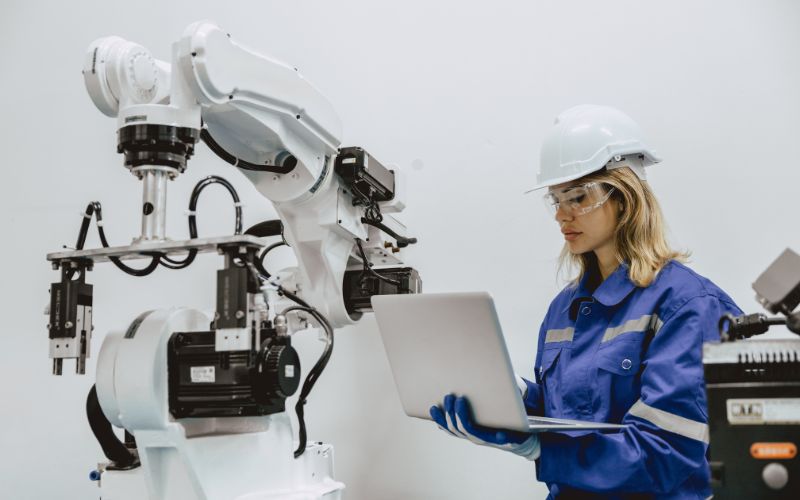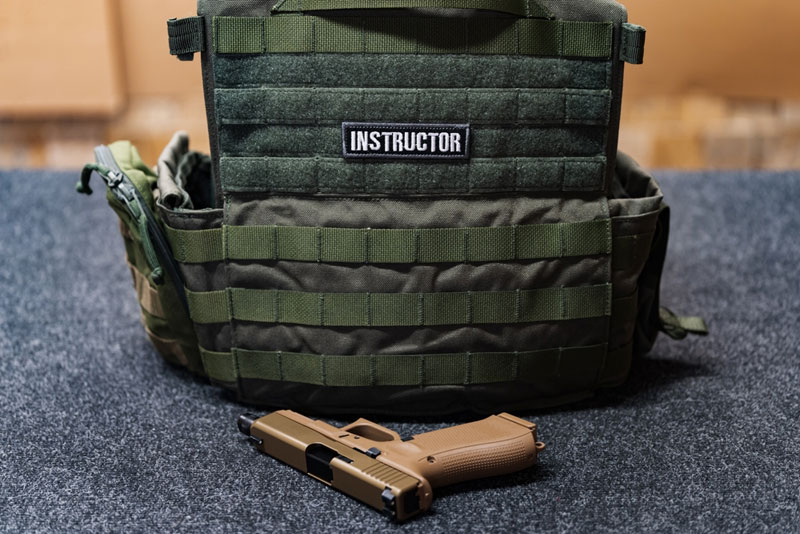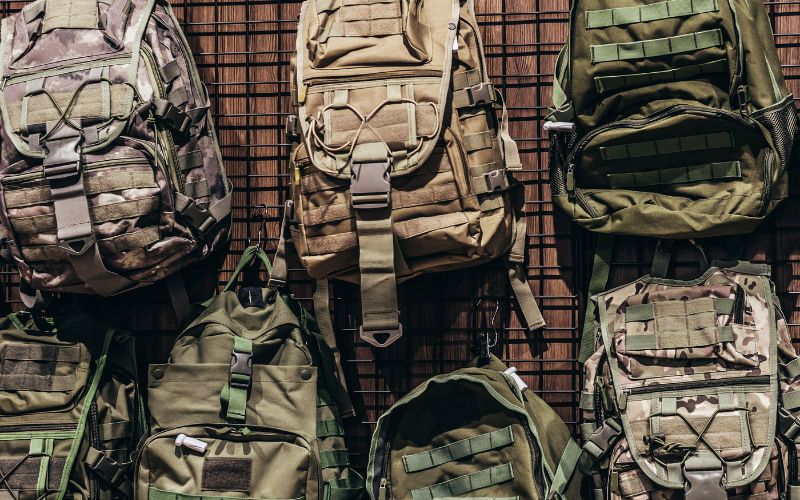Advancements In Body Armor Technology: What’s New In 2024?

For centuries, body armor has been a vital component of personal protective equipment for military, law enforcement, and security personnel. Over the years, the technological evolution of body armor has kept pace with the need to balance its protective role with an aesthetic that prioritizes maximum mobility and comfort. According to 2024 updates, body armor technology continues to make fantastic strides fueled by innovation in materials science, design, and engineering.
This blog explores the latest advancements in body armor technology and their implications for personal defense across various fields.
The Testing and Standard Process of Body Armor
A key aspect of developing body armor technology is rigorous testing and strict adherence to established standards. The U.S. Army, military branches, and law enforcement agencies require that body armor meet specific standards to be effective.
The United States National Institute of Justice (NIJ) defines the standards by which body armor is tested. These standards outline how the body armor is expected to perform under various conditions, including exposure to different types of ammunition, blunt trauma, and environmental factors. Law enforcement officers and military units authorize body armor that passes these standards.
Testing body armor involves firing it with different rounds, ranging from handgun rounds to powerful rifle rounds, and testing how well the armor can stop the rounds without harming the wearer. It also encompasses testing the material’s strength and its ability to withstand wear and tear, ensuring the armor’s efficacy over time.
The Body Armor Development
Body armor has advanced far from its earliest applications in history. Initially, it was made of metal plates, thick chain mail, and other heavy materials designed to protect against arrows and swords. Today, body armor technology has undergone significant improvements, thanks in part to advancements in materials such as Kevlar and Dyneema. These have been instrumental in increasing protection at the expense of weight.
1. Revolutionary Materials In Body Armor
Traditional body armor can hamper movement, speed, and endurance during stressful conditions. By 2024, we can already witness a paradigm shift toward materials that provide just as much protection but weigh a fraction of what the older ones do.
1.1 Ultra-High Molecular Weight Polyethylene (UHMWPE)
Ultra-high molecular Weight Polyethylene (UHMWPE) is one of the most outstanding materials in modern body armor. Its excellent strength-to-weight ratio has made it famous and used in military and civilian applications. UHMWPE is much lighter than conventional steel and ceramic plates yet offers similar and sometimes better ballistic protection. Weaving UHMWPE fibers into armor design provides flexibility for more comfortable wear without compromising safety.
The great advantage of UHMWPE body armor is that it can stop rounds from a rifle at the maximum velocity while being as light as possible.
1.2 Graphene Mixture
Graphene is another emerging game-changer material used in body armor technology, a one-atom-thick sheet of carbon atoms arranged in a hexagonal lattice. Integrating graphene’s strength with armor designs has opened up opportunities for ultra-thin and ultra-lightweight armor with excellent ballistic resistance.
1.3 Ceramic-Polymer Hybrids
This makes ceramic armor ideal for stopping armor-piercing rounds and has been used extensively. However, historically speaking, it is brittle, often breaking open with repeated impact. New hybrid designs of ceramics and polymers are coming up that combine the hardness of ceramics with the flexibility offered by advanced polymers.
Incorporating polymers also lightens ceramic plates; therefore, soldiers and law enforcement personnel require high levels of protection without having to carry the weight of traditional ceramic plates.
2. New Trends In Ballistic Protective Equipment
As threats have grown far more ballistic and exponentially greater in complexity and lethality, body armor manufacturers have concentrated on hardening the armor systems’ ability to withstand a broader spectrum of threats and kinetic impacts. Some of the most significant improvements related to this trend for 2024 are as follows: they provide better protection against firearms and other high-velocity threats.
2.1 Flexible Ballistic Panels
While effective at stopping bullets, traditional hard armor is completely inflexible and, therefore, uncomfortable to wear for long periods. In 2024, flexible and durable ballistic panels will bring revolutionary body armor performance to real-world environments, offering new materials that combine the stopping power of hard armor with the flexibility of soft armor.
2.2 Liquid Armor Technology
Liquid armor technology is another new development that splashed in 2024. The idea lies in the non-Newtonian fluids, which react differently to applied stress. Normally, these liquids are flexible; they harden upon impact, thus dispersing the energy over a wider area. Liquid armor technology is under investigation for both military and civilian body armor applications.
Liquid armor is not necessarily heavy or obtrusive, but offers better protection. It can be incorporated into various clothing and accessories, including vests, tactical helmets, and even tactical gloves, making it suitable for discreet yet effective coverage.
3. Plate Carrier Systems

In 2024, body armor manufacturers are concentrating on improving plate carriers to improve comfort and performance for the end user.
These modern plate carriers feature modular design that allows for multiple loadouts to be incorporated based on specific mission or threat levels as required. Improvements such as quick-release systems, adjustable straps, and padding are found in newer plate carriers.
4. Smart Body Armor: Internet Of Things And Technology Insertion
Wearable technology is bringing new designs to body armor. With enhanced situational awareness, real-time health monitoring, and even automated threat detection, smart body armor is expected to become more prevalent in the years leading up to 2024.
4.1 Health Monitoring Systems
Health monitoring systems are among the most exciting technologies to integrate into smart body armor. Sensors within the armor can monitor body temperature, heart rate, and blood pressure, providing information that can be sent to command headquarters or medical teams in real-time, allowing them to respond immediately to injuries or medical emergencies.
4.2 Embedded Communications
Built-in communication technology is another essential feature for smart body armor in 2024. This characteristic, which enables wireless systems integration within its body armor, will facilitate easy, walkie-talkie-like team communication and a Molle pouch without requiring radios or headsets.
These technologies can benefit secretive operations or high-pressure situations requiring silent communication.
4.3 Augmented Reality (AR) Integration
Augmented reality is also slowly making its way to body armor systems. Some of the advanced body armor designs for 2024 will have AR capabilities, which enable real-time data overlays and situational awareness through HUDs. These users will be able to receive live updates about potential threats, mission objectives, and environmental conditions without needing to look away from the action.
5. Lightweight Armor For Use
As mentioned above, most of the advancements in body armor technology are associated with military or police applications. Still, civilians are increasingly demanding light and concealable armor. The FOIA (Freedom of Information Act) has provided insight into how body armor is used outside the military and law enforcement sectors.
5.1 Concealable Armor for Civilians
The most talked-about developing trend in 2024 is inconspicuous, hideable body armor. There have been strides in lightweight and flexible designs that enable armor to be worn under clothing without attracting notice. Such armor would protect against standard handgun threats and be suitable for individuals working in high-risk areas or professions with potential dangers.
5.2 Fashionable and Functional Armor Designs

With the ever-growing demand for civilian armor, manufacturers started researching design improvements, thus developing functional and aesthetically pleasing armor. In 2024, body armor ceased to be huge, bulky vests. Instead, it has developed into jackets, hoodies, and even backpacks. This design provides individuals with protection without compromising on style or comfort.
Frequently Asked Questions
What Are Flagship Materials In Advanced Body Armor?
As of 2024, flagship innovations will be represented by graphene, nanocomposites, and ultra-high-molecular-weight polyethylene fiber, such as Dyneema. Lightweight, flexible, and hard-wearing armor provides superior ballistic protection while preserving improved mobility and comfort.
How Is Body Armor Integrating Smart Technology?
The newer smart body armor has incorporated features, including human health monitoring, embedded wireless communication tools, and even augmented reality (AR). These technologies enable greater situational awareness, superior communication, and real-time health data for the wearer in high-risk environments.
What is Kevlar used for in current body armor?
Kevlar is key in contemporary body armor due to its exceptional strength and toughness. As a lightweight yet resilient substance, Kevlar is applied in numerous layers to bullet-resistant vests, protecting against high-speed projectiles. Its capacity to stop handgun and certain rifle bullets while still being flexible makes Kevlar fundamental in body armor construction. If you wish to know more about the history of Kevlar in armor, watch videos on YouTube or track related posts on Instagram for updates.
How is body armor testing done to provide safety and efficacy?
Body armor is rigorously tested to conform to standards established by organizations such as the U.S. Army and the National Institute of Justice (NIJ). The test procedure entails firing armor with different projectiles and ensuring it offers resistant protection from bullets and other hazards. The impact is absorbed using layers of materials like Kevlar. You can read in-depth links to such tests through industry reports and photo records using FOIA requests or see them through YouTube videos highlighting the division of test standards and opportunity areas for future design improvement.


